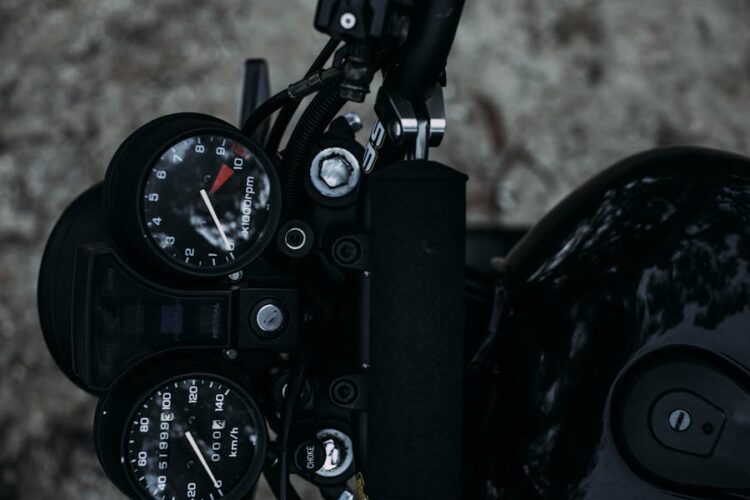Motorcycles offer a thrilling way to experience the road, but they also come with higher risks than other vehicles. Whether you’re a seasoned rider or just starting, practicing good motorcycle safety is essential for protecting yourself and others on the road. The combination of exposure to the elements, higher speeds, and lack of physical protection makes safety practices critical for all motorcyclists. Understanding how to stay safe while riding isn’t just about wearing a helmet; it’s about adopting smart riding techniques, being aware of your surroundings, and maintaining your motorcycle properly.
If you’ve been involved in a motorcycle accident or want legal guidance on accident-related issues, consulting a motorcycle accident lawyer in Indianapolis can help you understand your rights and options. From securing compensation to navigating insurance claims, an experienced lawyer can provide the support you need.
Why Motorcycle Safety Matters
Riding a motorcycle offers a unique sense of freedom, but it also exposes you to more significant dangers compared to driving a car. Motorcycles are smaller and harder for other drivers to see, and riders lack the protection of a steel frame, airbags, or seat belts. This means that accidents involving motorcycles are often more severe, with a higher risk of serious injury or death.
Despite these risks, motorcycle safety is often overlooked. Some riders, particularly those with more experience, may feel overconfident and neglect critical safety measures. On the other hand, beginners may not yet know the best practices for staying safe on the road. Regardless of your skill level, following motorcycle safety guidelines can significantly reduce your risk of injury.
Essential Motorcycle Safety Tips for All Riders
Whether you’re a new rider or a veteran, certain safety tips are universal and apply to everyone on the road. By following these guidelines, you can enjoy a safer, more enjoyable ride.
1. Wear Proper Safety Gear
The most fundamental rule of motorcycle safety is wearing the right gear. A helmet is the most critical piece of equipment, as it provides crucial protection for your head in the event of an accident. According to the National Highway Traffic Safety Administration (NHTSA), helmets are estimated to be 37% effective in preventing motorcycle fatalities.
In addition to a helmet, wear protective clothing such as jackets, gloves, boots, and pants made from durable materials like leather or Kevlar. These items not only protect you in the event of a crash but also shield you from the elements. High-visibility clothing can make you more noticeable to other drivers, reducing the likelihood of an accident.
2. Stay Visible to Other Drivers
One of the primary causes of motorcycle accidents is other drivers failing to see the motorcyclist. Motorcycles are much smaller than cars, making them easy to overlook, especially in blind spots. To avoid this risk, always make yourself as visible as possible. Ride with your headlights on, wear bright or reflective clothing, and position yourself in the lane where you are most likely to be seen by other motorists.
3. Follow Defensive Driving Techniques
Motorcyclists must adopt a defensive mindset when riding. This means anticipating potential hazards, such as cars making sudden lane changes or pulling out of driveways, and being prepared to react quickly. Avoid tailgating other vehicles, and leave plenty of space between yourself and other drivers. It’s essential to have an escape plan in mind for every situation to avoid collisions.
In addition, be extra cautious at intersections, where most motorcycle accidents occur. Slow down, make eye contact with drivers when possible, and always assume that other vehicles may not see you.
4. Know Your Limits
No matter how skilled a rider you are, it’s important to recognize your limitations. Overconfidence can lead to risky maneuvers or riding in dangerous conditions beyond your abilities. Always ride within your skill level, and don’t push yourself to keep up with more experienced riders if you’re in a group. It’s better to take your time and ride cautiously than to risk an accident.
Additionally, it’s crucial to avoid riding while under the influence of alcohol, drugs, or even fatigue. These factors can impair your judgment and reaction times, leading to dangerous situations on the road.
Advanced Safety Tips for Experienced Riders
If you’ve been riding for years and feel confident in your skills, it’s easy to become complacent. However, experienced riders are not immune to accidents, and staying sharp is essential for safety. Here are some tips for seasoned motorcyclists looking to enhance their safety practices:
1. Keep Your Bike in Top Condition
Maintenance is key to preventing accidents, especially for experienced riders who may be logging thousands of miles per year. Regularly inspect your motorcycle for any mechanical issues, paying close attention to the tires, brakes, lights, and oil levels. Make sure your bike is in optimal condition before every ride, and take it in for regular professional maintenance to avoid mechanical failures that could lead to accidents.
2. Improve Your Riding Techniques
Even experienced riders can benefit from honing their riding techniques. Consider taking an advanced motorcycle safety course to refresh your skills and learn new strategies for avoiding accidents. These courses often cover advanced braking techniques, cornering, and evasive maneuvers that can help you avoid accidents in emergency situations.
3. Ride Responsibly in Groups
Group rides can be a fun way to enjoy the road with fellow motorcyclists, but they also come with additional safety risks. When riding in a group, it’s important to maintain a safe distance from other riders, communicate clearly using hand signals, and avoid reckless behavior like weaving in and out of traffic. Group leaders should set a safe, manageable pace that allows all riders to follow safely.
4. Know the Road Conditions
Experienced riders often take longer trips, which means they may encounter a variety of road conditions. Be aware of weather changes, road construction, and potential hazards like gravel or potholes. Adjust your riding style accordingly, and avoid riding in dangerous conditions such as heavy rain, snow, or fog unless absolutely necessary.
Legal Considerations After a Motorcycle Accident
Even with the best safety practices, motorcycle accidents can still happen. If you’re involved in an accident, it’s important to understand your legal rights and responsibilities. In many cases, the negligence of another driver is to blame for the accident, and you may be entitled to compensation for your injuries, medical bills, and property damage.
Consulting with a motorcycle accident lawyer in Indianapolis is crucial after a motorcycle accident. An experienced attorney can help you navigate the legal process, deal with insurance companies, and pursue a lawsuit if necessary. A lawyer will also ensure that you are fully compensated for your injuries and any long-term consequences resulting from the accident.
Conclusion
Whether you’re a new rider or an experienced motorcyclist, safety should always be your top priority. By wearing proper safety gear, staying visible, practicing defensive driving, and knowing your limits, you can significantly reduce the risks associated with motorcycle riding. Additionally, seasoned riders should regularly update their skills, maintain their motorcycles, and remain aware of changing road conditions to stay safe on the road.
Despite all precautions, accidents can still happen. If you find yourself involved in a motorcycle accident, seeking legal advice from a motorcycle accident lawyer can help you understand your rights and secure the compensation you deserve. Safety isn’t just about the ride—it’s about being prepared for anything the road might throw your way.










